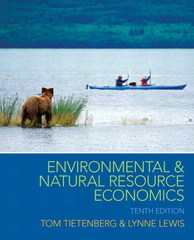Kindly solve the following for me
Consider a model in which our data are the = 80 + Brun + Bar, + 6,, 1=1,... ,n, where w; .... tha, and ry, .... F. are fixed constants. So, 1, and S, are the parameters. Assume gi's are uncorrelated errors with mean zero and standard deviation of o. Assume that _ us = Er. = 0. For notation - this is a bit different than what we used for simple linear regression case - let Sow = Now, Sme = Er x], Swar - Er wing, etc. 1. (3 points) Write the model in matrix form as Y = XB + e, describing entries in the matrix X 2. (4 points) If n > 3 when will X be full column rank? 3. (10 points) Assuming X is full column rank, give an explicit formula for the vector B in terms of S.. Say, etc. 4 (3 points) Find the covariance matrix of B.Consider random variables X and Y whose realizations r, and y, follow a data generating process (DGP) y = XO+u, (7) where X is a n-by-k matrix consisting of I's is and 8 is a k-by-1 vector. Assumptions (A0)-(A3) of the "classical linear regression model" are satisfied. Suppose we obtain a sample of n data observations on (I,, y; ). Suppose that although matrix X has full rank technically, it is "numerically"close to not having a full rank, making taking inverse of matrix (X'X) difficult. To alleviate the problem, we consider an alternative "Ridge Estimator", BR = (X'X + X /) X'y where A is a positive scalar. 1. Show that 3R minimizes the following objective function, H(3) = (y =X3) (y - X3) + 13B Note that 3'3 = _3:. which implies JR minimize a weighted average between the sum of squared error us and the sum of squared coefficients , 's. 2. Show that as A -+ po, the Ridge estimate Up converges to a vector of zeros. 3. Show that 34 is biased in the finite sample. 4. Show that OR is consistent. 5. Show that the Ridge estimator has a "smaller" finite sample variance than the OLS estimator. In other words, the matrix below V(BOLs) - V (3R ) is positive definite. Is this a violation of Gauss Markov Theorem? Explain.2. Suppose that X has mean ux and variance of , and suppose that Y has mean fly and variance of. Suppose the correlation between X and Y is p. Let U = aX + b and V = cy + d where a, b, c, d are constants. (a) Find Covariance(U. V ) in terms of a, b, c, d, ux. Ox, AY, of, and p. (Note: some of these parameters might not appear in the answer.) (b) Find Corr(U. V) in terms of a, b, c, d. ux. of, by, of, and p. (Note: some of these parameters might not appear in the answer.) (c) Suppose that W and I are two random variables with Var(W) = 4. Var(V) = 9, and Cov(W. V) = 2. Find Vor(-4WV + 3V - 2). (d) Suppose that X and Y are random variables with cov(X, Y) = 3. Find cov(2X - 1. 3 - 5Y).6. Consider the metric space R with usual distance and let f : R -> R be the function given by 3.x. *$ 1/3. f (x) = 1 2- 3x. 1/3 2/3. It can be shown that this function is f (x) = 13x - 21 - 13x - 1| + 3x - 1. so it is continuous. We define the set K = [0, 1/3] U [2/3, 1]. Based on A, we define a sequence of sets as follows: K1 = K and, for each n E N. Prove the following a) The sets K, are non-empty and compact, for all n E N. (Hint: Use induction. b) Kal C K.. for all n E N. (Hint: Use induction. c) The set C = OK is non empty and compact di Kof (0) =C










